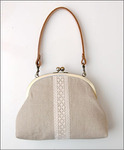Это цитата сообщения DONNA_FLORA Оригинальное сообщение
Не белыми нитками шито
 [370x500]ЗЛАТОЗАРИТЬ, озарять золотистым светом или блеском.
[370x500]ЗЛАТОЗАРИТЬ, озарять золотистым светом или блеском. Златозарный, блестящий, озаряющий золотистым блеском.
Златопрядный (золотопрядный), из золотых прядей состоящий, к золотопряденью, выделке швейного золота, бити относящийся, золотоволочильный.
Золотное шитье – древнейший вид рукоделия. Изначально рисунок на ткани вышивался золотыми или серебряными нитями, позднее их заменили более дешевые позолоченные нити, в которых было всего два – три процента золота. Поэтому декоративное шитье стало называться золотным, а не золотым.
Принято считать, что искусство вышивки золотыми нитями зародилось на Востоке, к нам оно пришло более тысячи лет назад. Своего расцвета золотное шитье достигло именно на Руси, в XV – XVI веке.
Разнообразие материалов и всевозможных сортов золотных нитей (прядёные, сканые, волоченные, канитель, трунцал, бить)
Богатые люди также могли себе позволить вышивку золотной и серебряной нитью. Именно такая вышивка лучше всего сохранялась, и образцы её дошли до нас.
E is for Electronic Cutting Machine
A to Z of Machine Embroidery and Quilting
 [x320]/embroidered-applique.com/wp-content/uploads/E1-150x150.jpg" target="_blank">http://embroidered-applique.com/wp-content/uploads/E1-150x150.jpg 150w, http://embroidered-applique.com/wp-content/uploads/E1-300x300.jpg 300w" width="320" />Electronic cutting machines have revolutionized the cutting of appliqué shapes.
[x320]/embroidered-applique.com/wp-content/uploads/E1-150x150.jpg" target="_blank">http://embroidered-applique.com/wp-content/uploads/E1-150x150.jpg 150w, http://embroidered-applique.com/wp-content/uploads/E1-300x300.jpg 300w" width="320" />Electronic cutting machines have revolutionized the cutting of appliqué shapes.
8 short years ago, if you wanted to make a quilt featuring appliqué, you had to print a template, trace the template onto fusible webbing (making sure you remembered to mirror the template if it wasn’t already mirrored), apply the fusible webbing to the back of your appliqué fabric and then cut the shapes out using a pair of scissors. Definitely time to watch a good movie or get together with some friends for a good chat (and maybe a glass of wine!).
If there was any complexity in your quilt, preparing and cutting all the appliqué shapes could take hours – or even days! The Heather Feather (quilt which I created back in 2009) has a little over 600 appliqué shapes on it – it took about 24 hours to prepare and cut all of them.
 [x450]/embroidered-applique.com/wp-content/uploads/2015/02/Heather-Feather-Full-150x150.jpg" target="_blank">http://embroidered-applique.com/wp-content/uploads...ather-Feather-Full-150x150.jpg 150w, http://embroidered-applique.com/wp-content/uploads...ather-Feather-Full-300x300.jpg 300w" style="margin: 0px; padding: 0px; border: none !important; font-style: inherit; font-variant: inherit; font-weight: inherit; font-stretch: inherit; font-size: inherit; line-height: inherit; font-family: inherit; vertical-align: baseline; height: auto; max-width: 100%; box-sizing: border-box; opacity: 0.99; transition: all 0.3s ease-in-out; width: 460px; box-shadow: none !important;" width="450" />
[x450]/embroidered-applique.com/wp-content/uploads/2015/02/Heather-Feather-Full-150x150.jpg" target="_blank">http://embroidered-applique.com/wp-content/uploads...ather-Feather-Full-150x150.jpg 150w, http://embroidered-applique.com/wp-content/uploads...ather-Feather-Full-300x300.jpg 300w" style="margin: 0px; padding: 0px; border: none !important; font-style: inherit; font-variant: inherit; font-weight: inherit; font-stretch: inherit; font-size: inherit; line-height: inherit; font-family: inherit; vertical-align: baseline; height: auto; max-width: 100%; box-sizing: border-box; opacity: 0.99; transition: all 0.3s ease-in-out; width: 460px; box-shadow: none !important;" width="450" />D is for Ditch
A to Z of Machine Embroidery and Quilting
 [x320]/embroidered-applique.com/wp-content/uploads/D1-150x150.jpg" target="_blank">http://embroidered-applique.com/wp-content/uploads/D1-150x150.jpg 150w, http://embroidered-applique.com/wp-content/uploads/D1-300x300.jpg 300w" width="320" />If you’re a quilter, you’re probably familiar with the concept of “stitching in the ditch“. Basically, this means stitching on the lower side of a seam that has been pressed to one side, as close to the fold as possible.
[x320]/embroidered-applique.com/wp-content/uploads/D1-150x150.jpg" target="_blank">http://embroidered-applique.com/wp-content/uploads/D1-150x150.jpg 150w, http://embroidered-applique.com/wp-content/uploads/D1-300x300.jpg 300w" width="320" />If you’re a quilter, you’re probably familiar with the concept of “stitching in the ditch“. Basically, this means stitching on the lower side of a seam that has been pressed to one side, as close to the fold as possible.
 [x134]/embroidered-applique.com/wp-content/uploads/Pieced-Ditch-768x257.jpg" target="_blank">http://embroidered-applique.com/wp-content/uploads/Pieced-Ditch-768x257.jpg 768w, http://embroidered-applique.com/wp-content/uploads/Pieced-Ditch-1024x342.jpg 1024w, http://embroidered-applique.com/wp-content/uploads/Pieced-Ditch-250x84.jpg 250w, http://embroidered-applique.com/wp-content/uploads/Pieced-Ditch-610x204.jpg 610w, http://embroidered-applique.com/wp-content/uploads/Pieced-Ditch-150x50.jpg 150w, http://embroidered-applique.com/wp-content/uploads/Pieced-Ditch.jpg 1275w" style="margin: 0px; padding: 1px; border: 1px solid rgb(30, 200, 187); font-style: inherit; font-variant: inherit; font-weight: inherit; font-stretch: inherit; font-size: inherit; line-height: inherit; font-family: inherit; vertical-align: baseline; box-shadow: rgb(204, 204, 204) 0px 0px 5px; height: auto; max-width: 100%; box-sizing: border-box; opacity: 0.99; transition: all 0.3s ease-in-out;" width="400" />
[x134]/embroidered-applique.com/wp-content/uploads/Pieced-Ditch-768x257.jpg" target="_blank">http://embroidered-applique.com/wp-content/uploads/Pieced-Ditch-768x257.jpg 768w, http://embroidered-applique.com/wp-content/uploads/Pieced-Ditch-1024x342.jpg 1024w, http://embroidered-applique.com/wp-content/uploads/Pieced-Ditch-250x84.jpg 250w, http://embroidered-applique.com/wp-content/uploads/Pieced-Ditch-610x204.jpg 610w, http://embroidered-applique.com/wp-content/uploads/Pieced-Ditch-150x50.jpg 150w, http://embroidered-applique.com/wp-content/uploads/Pieced-Ditch.jpg 1275w" style="margin: 0px; padding: 1px; border: 1px solid rgb(30, 200, 187); font-style: inherit; font-variant: inherit; font-weight: inherit; font-stretch: inherit; font-size: inherit; line-height: inherit; font-family: inherit; vertical-align: baseline; box-shadow: rgb(204, 204, 204) 0px 0px 5px; height: auto; max-width: 100%; box-sizing: border-box; opacity: 0.99; transition: all 0.3s ease-in-out;" width="400" />
It’s an ideal way to quilt if you’re a beginner, and it’s a quick and easy way to quilt if you’re short on time (or ideas!).
When I’m quilting around embroidered appliqué shapes, I like to stitch in the “ditch” around the edge of the shape.
B is for Basting
Basting is defined as:
“The act of moistening food while cooking, especially with stock or pan juices.”
Oops! Wrong kind of basting!
The kind of basting we do in machine embroidery and quilting is:
“Sewing with long, loose stitches to hold material in place until the final sewing.”
Basting is important for both machine embroidery and quilting.
When you’re making a quilt, most people are familiar with the concept of basting the layers of the quilt together (backing + batting + quilt top). For a small quilt, you might baste the layers together using long, loose stitches. For a larger quilt, most people use safety pins. I prefer to use long straight pins. Even quilts quilted using a long arm machine are basted, ensuring that the layers don’t shift when the quilt is being wound and unwound on the rollers.
A to Z of Machine Embroidery and Quilting
 [x320]/embroidered-applique.com/wp-content/uploads/A1-150x150.jpg" target="_blank">http://embroidered-applique.com/wp-content/uploads/A1-150x150.jpg 150w, http://embroidered-applique.com/wp-content/uploads/A1-300x300.jpg 300w" width="320" />
[x320]/embroidered-applique.com/wp-content/uploads/A1-150x150.jpg" target="_blank">http://embroidered-applique.com/wp-content/uploads/A1-150x150.jpg 150w, http://embroidered-applique.com/wp-content/uploads/A1-300x300.jpg 300w" width="320" />
When you’re making a quilt top, there are typically two techniques you can use. You can piece small pieces of fabric together to create a larger piece, and you can appliqué small pieces of fabric onto a larger piece of fabric to create a picture or a pattern.
My favorite technique and specialty is appliqué stitched using my embroidery machine, or machine embroidered appliqué.
Сборник из семи итальянских книг рукоделия 16-го века (схемы для вышивки)
Domenico da Sera, 1546 г.
Giovanni Andrea Vavassaro, 1546 г.
Giovanni Antonio Tagliente, 1531 г.
Giovanni Ostaus, 1561 г.
Giovanni Ostaus, 1567 г.
Niccolo Zoppino, 1530 г.
Niccolo Zoppino, 1537 г.
vk.com/wall-95197727_41
И много ссылок и блоге
http://daughterofthebull.blogspot.ca/2014/06/modelbuchs-and-where-to-find-them.html
Это цитата сообщения Аннушка1707 Оригинальное сообщение
Техники вышивания. Часть 10: барджелло
 [361x400]
[361x400] [240x320]Барджелло - это счетная вышивка выполненная повторяющимися в определенной последовательности вертикальными плотно прилегающими друг к другу плоскими стежками, длина и цвет которых изменяется в зависимости от заданного геометрического узора. Разновидность вышивки барджелло, рисунок которой состоит из рядов остроконечных или плавных зигзагов, напоминающих языки пламени, получила также название - "фиамма" (итал. Ricamo punto fiamma (Fiamma) англ. Flame stitch). Вышивка выполняется на плотной счетной ткани любым типом ниток от шерсти до шелка (наиболее распространенной считается вышивка шерстью) и полностью покрывает основу, создавая эффект тканого полотна.
[240x320]Барджелло - это счетная вышивка выполненная повторяющимися в определенной последовательности вертикальными плотно прилегающими друг к другу плоскими стежками, длина и цвет которых изменяется в зависимости от заданного геометрического узора. Разновидность вышивки барджелло, рисунок которой состоит из рядов остроконечных или плавных зигзагов, напоминающих языки пламени, получила также название - "фиамма" (итал. Ricamo punto fiamma (Fiamma) англ. Flame stitch). Вышивка выполняется на плотной счетной ткани любым типом ниток от шерсти до шелка (наиболее распространенной считается вышивка шерстью) и полностью покрывает основу, создавая эффект тканого полотна.Это цитата сообщения morskaia25 Оригинальное сообщение
Стильные винтажные элементы орнамента.
1.
 [700x700]
[700x700]
 [показать]
[показать] [показать]
[показать]
Интересную идею украшения предложила блоггерша из Теннеси, США. Блог под названием Хелленисмос .
Автор называет эту технику "ложный пэчворк", хотя это похоже на технику "артишок" или "уголки".
Для создания плоского круглого украшения требуется:
Валентинка-сердечко в технике артишок. МК
Совершенно случайно наткнулась на книжку, где показано как РИСОВАТЬ кружева! Увидела необычное для себя обратное перевоплощение из кружева в рисунок. Думаю, что схемы кружевов рисунки могут пригодится и для вышивки идля стежки! Вот они тайны перевоплощения!
http://fotki.yandex.ru/users/zhital/view/369647?page=0

